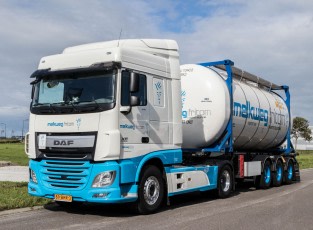How to streamline a multinational’s innovation process
For producers of fast-moving consumer goods (FMCG) companies, innovation is of vital importance. P2 has helped a multinational food company to streamline its innovation process, following a merger between organisations with different innovation cultures and management structures. The goal: to gain and maintain a global lead
The companies that merged to form the new multinational differed considerably in their corporate culture and organisation of their innovation activities. To coordinate innovation, the newly formed company had made plans for a new central division and asked P2 to tailor a global innovation approach to this plan.
Scale and leverage
For the multinational (a well-known brand house), product innovation is of vital importance: not only to stay at the forefront of setting new trends with new products, but also to enable a smart response to innovations from other market parties. To benefit from its increased scale and leverage after the merger, the new multinational had to cast the innovation processes of its constituent companies in a new mould. Hence the need for a shared language and uniform process approach for the company’s innovation managers around the world.
Gates as explicit decision points
To achieve this need, P2 trained the innovation managers (who come from many different countries) in using a tailor-made Stage-Gate approach. In this model, the innovation process follows a number of distinct stages that are separated by gates. Each gate represents an explicit decision point, where the most current progress information and forecasts are evaluated to decide whether the project can move into the next stage, needs to be adjusted first, is put on hold, or is aborted. During P2’s training sessions, the key was to constantly zoom in and out, to find a balance between defining a streamlined global innovation approach and paying attention to individual participants and their professional experience.
Different role perceptions
Once the innovation managers were on the same page, it became clear that there was a similar need for streamlining deeper down the organisation. This was partly because the merged companies each followed different project structures and differed in their role perceptions of, for example, clients, project leaders, line managers and team members. Hence, what applied to innovation projects also appeared to apply to areas such as R&D, ICT and operational divisions. For this reason, P2 helped the multinational’s staff – in parallel with the roll-out of the Stage-Gate approach – to develop project skills, including Agile working.
One approach, one language
P2’s training sessions and process management oiled the wheels for various processes within the client’s organisation. This soon became apparent when new projects moved through the organisation with better results. Floor Verdenius, project leader at P2: “What helped is that we gave the trainings together with a co-trainer from within the company. Our trainer and the internal trainer reinforced each other and together ensured embedding within the organisation. It is great to see how the company’s staff worldwide have embraced the new structures and tools. Sharing the same approach to innovation has created a shared language, and this helps the organisation as a whole.”




